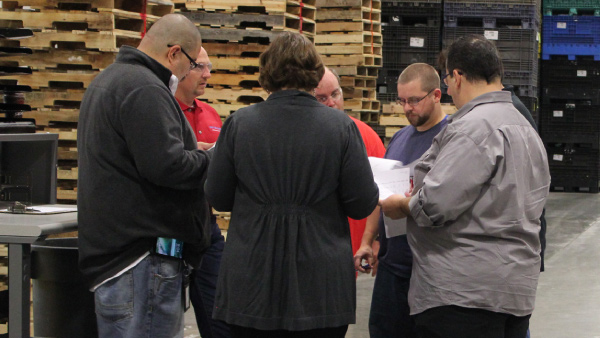Those familiar with a Lean methodology should be familiar with the concept of kaizen, or “continuous improvement”, as it serves as a natural extension of the Lean ideals of waste identification and elimination. However, when trying to find an entry point to introduce Lean into a workplace, it can be difficult to discern how these transformative concepts translate into a direct, actionable engagement for employees without losing them in extensive training materials and seminars. Perhaps one of the most directly beneficial points of introduction is through the adoption of “kaizen events.” Kaizen events are a gathering of team members from across an organization, brought together to discuss and implement solutions for specific examples of “waste”. In essence, it’s assembling a business problem strike team.
The Purpose of Kaizen Events
The main goal of kaizen events is the identification and elimination of areas of “waste” around a business — namely, points of frustration where a business can operate more efficiently. To accomplish this, a kaizen event is used to define and document the issue, brainstorm and develop a solution, implement the solution, brainstorm and develop a follow-up plan, and report changes. The main points in determining what should be tackled by a kaizen event are deciding if what is being discussed is a. specific, and b. actionable. These two points are critical, as non-actionable items require broader solutions than what can be accomplished immediately, and non-specific items are too general to be helpfully discussed and resolved during a kaizen event.
The group assembled for a kaizen event should be relatively small, generally six to ten members. The individuals should be members of various teams who are vested in the solution to the issue, whether directly or indirectly. This is because the kaizen event is a space where solutions are determined by a group discussion, with an emphasis that ideas for solutions can come from any party, no matter their role. No matter who is participating within the group, there should be a strong reminder that those participating in the event are all on equal footing and that all solutions have potential.
Kaizen Events at Hansen Plastics
“Traditionally, problem-solving in manufacturing entailed ‘getting your smartest people in the room.’ Senior leaders would often bring together their best engineers. At HPC, we look for diversification in our teams; promoting different perspectives and opinions. Our Kaizen teams are often made up of employee-owners of all skill levels and experiences; inspector/packers, technical staff, administrative, etc. Through this practice, we’ve learned ‘why’ gets asked much more. Asking ‘why’ challenges existing processes and assists the team in discovering the root of the problem. – Glenn Whitecotton, White Value Stream Leader.
A relatively recent example of a successful kaizen event seen through to fruition for Hansen was the overhaul of the onboarding experience. “You’re going to hear a lot of examples over and over of lean processes or practices being applied to production-specific initiatives,” said Glenn, “but it’s also just as important in front-office functions, so another kaizen event we did about a year ago now was for our onboarding of new HPC Employee-Owners.”
By bringing together a group from multiple teams around Hansen Plastics, the onboarding training was able to be revamped into a more comprehensive, robust three-day experience, providing new Employee-Owners with a fuller understanding of Hansen Plastics as a whole. Part of this includes spending time on the floor as an Inspector-Packer, “regardless of what position they’re coming in for…so they can understand the most value-added position that we have,” said Glenn.
At Hansen Plastics, kaizen events have been critical to upholding the underlying Lean philosophy on which we operate. Held usually two to three times a month, kaizen events have helped champion the “continuous improvement” ideal, improving business practices and functions, as well as creating an atmosphere where Hansen Plastics’ Employee-Owners truly understand how vital their expertise and knowledge are to Hansen Plastics’ overall success. This, in turn, allows Hansen Plastics to provide better products and experiences to their customers, as Employee-Owners take a greater sense of pride and direct accomplishment in their day-to-day duties. To learn more about Hansen Plastics Corporation, their techniques, and their business philosophy, visit Hansenplastics.com.



